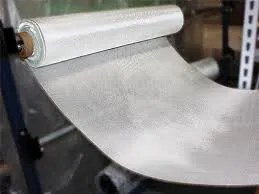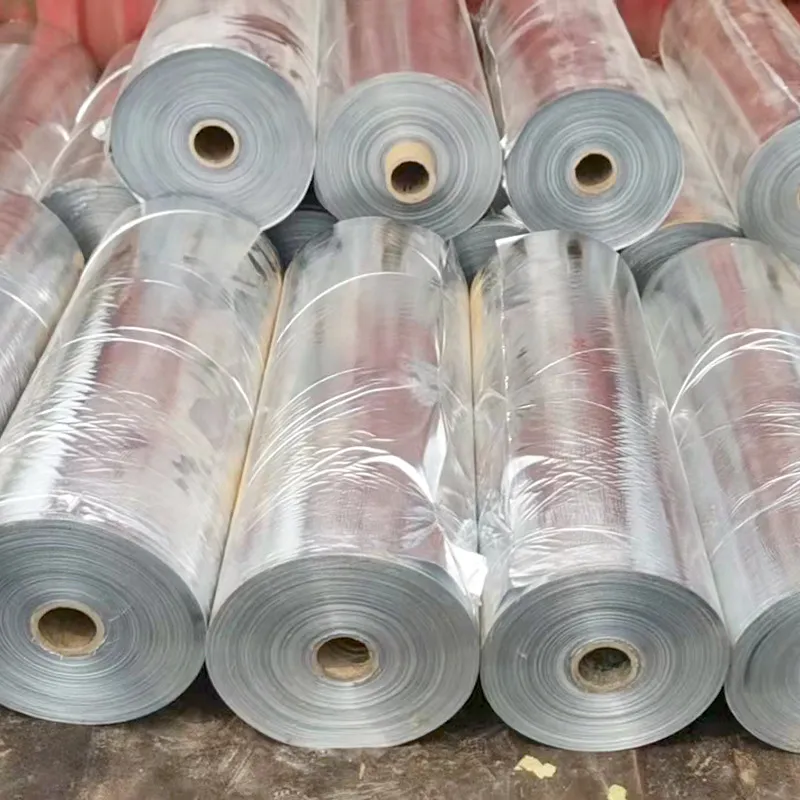Introduction
Fiberglass cloth, in a way, is a rather elastic material that finds use almost all over the industry, from aerospace to marine applications. Among numerous types of fiberglass cloth, 121 fiberglass cloth Textron had shown to be quite wonderful with its excellent properties and performance. The information about the subtleties of 121 fiberglass cloth, including its application benefits, and differences with other fiberglass materials, are included in this detailed guide.
Understanding 121 Fiberglass Cloth Textron
121 glassfiber weave TX Textron: This is another type of fiberglass fabric used by Textron, a company renowned for advanced materials. The cloth is woven from continuous filament yarns, thereby giving the cloth high strength and durability. It is also common in applications of composite where a high strength-to-weight ratio is needed.
Composition and Key Properties
The 121 fiberglass cloth Textron is constructed from E-glass fibers, which are known for their excellent electrical insulation properties, strength, and resistance to corrosion. The key properties of this fiberglass cloth include:
- High Tensile Strength: Ensures robust reinforcement in composite materials.
- Lightweight: Delivers high performance without adding significant weight.
- Thermal Stability: Maintains integrity under high temperatures, making it suitable for various industrial applications.
- Chemical Resistance: Durable in harsh chemical environments.
- Electrical Insulation: Ideal for electrical applications due to its non-conductive nature.
Diverse Applications of 121 Fiberglass Cloth Textron
It is a versatile material that the 121 fiberglass cloth Textron can use in many applications. The following are the major industries in which this material is widely use:
Aerospace Industry
The aerospace industry requires lightweight and strong materials. 121 fiberglass cloth is one of the materials most ordinarily used in forming an aircraft component, such as a fuselage panel, wing structures, and interior parts. Its strength-to-weight ratio makes an aircraft lighter without sacrificing its structural capabilities.
Also read: wmc sc-4002-6 sewing
Marine Industry
For boat and shipbuilding, materials need to withstand harsh marine environments. The 121 fiberglass cloth Textron is ideal for creating hulls, decks, and other structural components. Its resistance to corrosion and water absorption makes it a reliable choice for marine applications.
Automotive Industry
In the automotive industry, 121 fiberglass cloth Textron is used in the production of body panels, chassis components, and interior parts. The material helps in reducing the overall weight of vehicles, leading to improved fuel efficiency and performance.
Construction Industry
The construction industry benefits from the strength and durability of 121 fiberglass cloth. It is use in reinforcing concrete structures, creating durable roofing materials, and fabricating various architectural elements.
Electrical and Electronics Industry
Due to its excellent electrical insulation properties, 121 fiberglass cloth is widely used in the electrical and electronics industry. It is employq1 in the manufacturing of circuit boards, insulation panels, and other components where electrical insulation is crucial.
Advantages of Using 121 Fiberglass Cloth Textron
Choosing 121 fiberglass cloth Textron for your projects offers numerous advantages.
Superior Strength and Durability
The high tensile strength of 121 fiberglass clot Textron ensures that the composite materials it reinforces are robust and long-lasting. This makes it ideal for uses demanding robust mechanical strength and long-lasting durability.
Lightweight Construction
One of the significant advantages of 121 fiberglass cloth is its lightweight nature. It allows for the construction of lightweight yet strong components, which is particularly beneficial in industries like aerospace and automotive, where weight reduction is crucial.
Resistance to Corrosion and Chemicals
The chemical resistance of 121 fiberglass cloth Textron makes it ideal for use in environments exposed to harsh chemicals and corrosive substances. This property ensures the longevity and reliability of the materials in such conditions.
Thermal Stability
With its excellent thermal stability, 121 fiberglass cloth can withstand high temperatures without losing its structural integrity.
Electrical Insulation
The non-conductive nature of 121 fiberglass cloth Textron provides excellent electrical insulation, making it perfect for use in electrical and electronic applications.
Comparing 121 Fiberglass Cloth Textron with Other Fiberglass Cloths
When selecting a fiberglass cloth for your project, it’s essential to understand how 121 fiberglass cloth compares to other types of fiberglass cloths. Here are some comparisons:
121 Fiberglass Cloth Textron vs. 1080 Fiberglass Cloth
121 fiberglass cloth Textron offers higher tensile strength compared to 1080 fiberglass cloth, making it more suitable for applications requiring superior mechanical strength. However, 1080 fiberglass cloth is finer and lighter, which may be preferable for applications needing a smoother finish.
121 Fiberglass Cloth Textron vs. 7781 Fiberglass Cloth
7781 fiberglass cloth has a higher thread count and is thicker than 121 fiberglass cloth. While 7781 provides better surface finish and dimensional stability, 121 fiberglass cloth is more lightweight and offers better strength-to-weight ratio, making it ideal for applications where weight savings are critical.
121 Fiberglass Cloth Textron vs. Carbon Fiber Cloth
Carbon fiber cloth is known for its exceptional strength and lightweight properties. While 121 fiberglass cloth offers good strength and is cost-effective, carbon fiber cloth surpasses it in terms of strength and stiffness. However, carbon fiber is significantly more expensive, making 121 fiberglass cloth a more economical choice for many applications.

Utilizing 121 Fiberglass Cloth Textron in Projects
Effectively using 121 fiberglass cloth requires understanding the proper techniques for handling and applying the material. Here are some steps to guide you:
Surface Preparation
Before applying the 121 fiberglass cloth, ensure that the surface is clean, dry, and free of contaminants. Proper surface preparation is crucial for achieving a strong bond between the fiberglass cloth and the substrate.
Cutting the Cloth
Cut the 121 fiberglass cloth to the desired size and shape using sharp scissors or a rotary cutter. Ensure that the edges are clean and free of frays to avoid compromising the integrity of the cloth.
Applying Resin
Lay the 121 fiberglass cloth Textron onto the resin-coated surface, ensuring it is position correctly. Gently press the cloth into the resin to remove any air bubbles and ensure good adhesion.
Additional Layers
For increased strength and thickness, apply additional layers of 121 fiberglass cloth. Ensure each layer is fully satura with resin and free of air bubbles. Allow each layer to cure before applying the next.
Curing and Finishing
Allow the resin to cure fully according to the manufacturer’s instructions. Once cured, you can sand and finish the surface as needed. The final product will have a smooth, durable finish with the desired strength and performance.
Tips for Working with 121 Fiberglass Cloth Textron
To achieve the best results when using 121 fiberglass cloth Textron, consider the following tips:
Use High-Quality Resin
The quality of the resin used with 121 fiberglass cloth significantly impacts the final product’s performance. Choose a high-quality resin that is compatible with fiberglass cloth and suitable for your specific application.
Avoid Air Bubbles
Air bubbles can weaken the composite material and reduce its strength. Ensure that the 121 fiberglass cloth Textron is properly satura with resin and that all air bubbles are remove during the application process.
Follow Safety Precautions
Working with fiberglass and resin materials requires proper safety precautions. Wear protective clothing, gloves, and a mask to avoid skin and respiratory irritation. Work in a well-ventilated area to minimize exposure to fumes.
Store Properly
Store 121 fiberglass cloth Textron in a dry, cool place away from direct sunlight. Proper storage ensures the material remains in good condition and ready for use when needed.
Environmental Impact and Sustainability
In today’s world, the environmental impact of materials is an important consideration. Fiberglass, including 121 fiberglass cloth, is known for its durability and long life, which contributes positively to sustainability by reducing the need for frequent replacements. However, it is also important to consider the entire lifecycle of the material.
Recycling Fiberglass
Recycling fiberglass is a challenging but growing field. While fiberglass cannot be recycle as easily as some other materials, there are processes being develop to grind it into a filler material that can be use in other products. Efforts are also being made to improve the sustainability of the production process for materials like 121 fiberglass cloth.
Reducing Waste
When working with 121 fiberglass cloth Textron, it’s important to minimize waste. Efficient cutting patterns and careful planning can help ensure that material usage is optimize, reducing the amount of scrap produced. Additionally, any excess resin and cut-off pieces should be dispose of properly to minimize environmental impact.
Innovations and Future Developments
The field of advanced materials is always evolving, and 121 fiberglass cloth is no exception. Innovations are continually being made to improve the performance and sustainability of fiberglass products.
Enhanced Performance
There are also studies about the new types of glass fibers, superior weaving techniques, and resin formulation which alter the strength, durability, and other properties of the fiberglass cloth. These are intend to make products like 121 fiberglass cloth even better and more versatile.
Sustainable Materials
Environmental sustainability is a key focus area for most manufacturers, and efforts cover the whole gamut, from creating more recycled content in the fiberglass cloth to making it easier to recycle in its own right. Improvements in energy efficiency also make the manufacturing process less environmentally impactful overall.
Conclusion
121 Fiberglass Cloth Textron refers to a versatile and high-performance material that can be use in a vast array of applications across different industries. Strengths include superior strength, weight, and excellent resistance. For most projects, it perfectly works out as the reliable and durable material, and once you know its properties, applications, and best uses ensure that the effective use of these items in your projects for maximum results. The future of this outstanding material does appear bright for the years to come, promising yet better performance and sustainability.
In this guide, you will be provided with all the necessary information about 121 fiberglass cloth. Working on an aerospace project, boat, or the creation of a number of automotive components may be implement; definite performance and reliability can be assure by this material. Continue reading to get update and inform about the latest developments and innovations so you can make the most out of what 121 fiberglass cloth has to offer.
